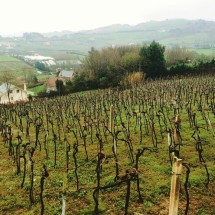Law Offices of John P. Connell, P.C.: “When it comes to wine, there is no ingredient more important than location,” explains the Joint Declaration to Protect Wine Place & Origin, a petition aimed to discourage the misapplication of geographic regions on wine labels. Advocators and signatories of this petition include the regions of Napa Valley, Sonoma County, Champagne, and Chianti Classico, among others. Together, they hope to gain supporters and spread awareness of labeling laws and consumer protection in the wine industry.
What current U.S. laws govern the use of geographic regions on wine labels?
Section 205(e) of Title 27 of the United States Code makes it unlawful to sell, or otherwise introduce into interstate or foreign commerce, any alcohol that is not bottled, packaged, and labeled in conformity with the regulations set forth by the Alcohol and Tobacco Tax and Trade Bureau (“TTB”). Part 4, 5 and 7 of Title 27 of the Code of Federal Regulations provide the regulatory guidance on the labeling of distilled spirits, wine, and malt beverages, respectively. These regulations are intended to prohibit the use of deceptive and misleading statements on alcoholic beverage labels.
The TTB enforces certain regulations on a winemaker choosing to identify an appellation of origin or a viticultural area on its wine label. 27 CFR §4.25(a) defines an “American appellation of origin” as (1) The United States, (2) a State, (3) two to three contiguous States, (4) a county, (5) two to three counties in the same State, or (6) a viticultural area. An “American Viticultural Area” (“AVA”) is defined as a “delimited grape-growing region having distinguished features … and a name and a delineated boundary as established [and approved by the TTB in accordance with Part 9 of Title 27 of the Code of Federal Regulations.]” 27 CFR §4.25(e). In order for a domestic wine to legally use an appellation of origin on its label, at least 75% of the volume of the wine must be derived from grapes, or other fruit or agricultural products, grown in the area identified. 27 CFR §4.25(b)(i). In addition, in order for a domestic wine to legally use an AVA on its label, at least 85% of the wine must be derived from grapes grown within the AVA identified. 27 CFR §4.25(e).
What if a winemaker wants to include a geographic indication in its trademark?
The United States Patent and Trademark Office (“USPTO”) defines “geographical indications” (GIs) as “indications that identify a good as originating in the territory, or a region or locality in that territory, where a given quality, reputation or other characteristic of the good is essentially attributable to its origin.” The Lanham Act governs the use of such GIs in the trademarks for goods. Section 2(a) of the Lanham Act bars registration of trademarks that consist of or are comprised of a GI which, “when used on or in connection with wines or spirits, identifies a place other than the origin of the goods.” This means that a winemaker wishing to use a GI in the trademark for its beverage can only do so if the beverage originates from the indicated geographic region.
Yet winemakers should be cautious before using a trademark with a GI. Should the geographic region later become an approved AVA, that winemaker will be unable to prevent subsequent users from putting the AVA on their competing wine products. The Court of Appeals for the Sixth Circuit, for example, held that use of the mark “Chateau de Leelanau Vineyard and Winery” was not an infringement of the registered mark “Leelanau Wine Cellars” where the government designated the “Leelanau Peninsula” in Michigan as an approved AVA.[1] In this case, plaintiff, Leelanau Wine Cellars, was unable to enjoin its competitor’s use of a potentially confusingly similar mark, even though plaintiff registered its trademark and used it in interstate commerce for years prior to the government’s approval of the AVA.
For this reason, it is a good idea for winemakers to display a strong brand name on their labels, in addition to any desired AVA or wine region. Indeed, “courts have held that the distinctiveness of the label design, not the statutorily-required descriptive information, helps consumers distinguish between wines.”[2]
CONTRIBUTED BY COURTNEY N. McGEE
© 2014, Law Offices of John P. Connell, P.C.

